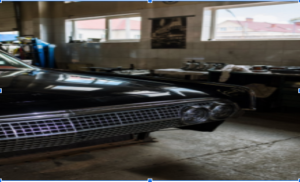Car radiators are almost the most common cause of a breakdown in almost every part of the world. Whenever you run your engine at high speeds, its pistons create friction, resulting in a heated engine.
But how does it affect the breakdown? How does your engine stay cool? The answer is the car radiator. Let’s get started with the piece to know more!
What is a Radiator?
A radiator is an automobile unit that is responsible for heat exchange between the engine unit, from one medium to another. The end results of a car radiator mechanism helps in the effective cooling of your engine.
Your car’s radiator plays a significant role by circulating a cooling liquid (coolant), through the engine block where the unit faces extreme heat due to friction. Thanks to their presence in different shapes & sizes, automobile radiators have adapted to the rate of cooling that they offer.
 Parts of Radiator
Parts of Radiator
Chances are that you might have great confusion when you see a radiator for the first time. Further, not being educated around the parts can leave you in great confusion at the time of breakdown. Therefore, to help you understand better, we have discussed the different parts that form a radiator.
-
Core-
As the name suggests, the core plays a significant role in the overall cooling of your car engine. The largest part of a radiator, this large metal block is present with tiny metal fins and helps in the dissipation of heat.
-
Pressure Cap-
The pressure cap in a radiator is responsible for creating a seamless pressure for the coolant fluid. However, the pressure cap also plays a major role in bleeding off the hot coolant. Remember, hot coolant can damage the auto parts, if your pressure cap fails to execute functions smoothly.
-
Outlet and Inlet Tank-
Located on the head of the radiator, the inlet and outlet tank are generally a metal or plastic piece. These collars are responsible for navigating the coolant from the warm components of the mill towards the radiator.
-
Transmission Cooler-
As the name suggests, this part of the radiator allows seamless transmission of the gears in your vehicle. This part of the radiator plays a significant role in cooling off the car in the case of an automated transmission system.
Types of Radiators
There are various types of radiators. Below are the types of radiators used in automotive engines.
-
Tubular Core Type-
In tubular core type fins are placed around the tubes to improve heat transmission. The upper and lower tanks are connected by tubes through which water passes. Air passes outside the tubes and between the fins, absorbing the heat from passing water.
-
Cellular Core Type-
This core is composed of a large number of individual cells surrounded by water. Air passes through the tubes and the water flows in between them. Because of its appearance, this type is usually known as a honeycomb radiator.
Tips to Keep Your Radiator Cool
-
Inspect your vehicle’s coolant periodically-
Try making a habit of regularly checking your car’s coolant levels. To do the same, ensure that you inspect the radiator or your coolant reservoir. Having low levels of coolant in your vehicle is one of the most common reasons for overheating. Make sure your coolant and water levels are appropriate.
-
Turn off AC to reduce the load on your engine-
Turning off the AC allows you to remove the extra load that the engine is going through. Turning off the air conditioning unit, releases any form of extra load that comes from the continuous running of the AC unit.
-
Periodic flushing of the radiator coolant-
No matter if you like to maintain your vehicle’s coolant maintained at the required optimum levels, you should always get it replaced at periodical intervals. All you need to do is flush off the old coolant and replace it with a new one. It’s that easy!
-
Checking out the thermostat-
Your car’s thermostat plays a significant role in navigating the coolants that move throughout the engine. Therefore, when you have a failing thermostat, chances are that your car might show signs of overheating. Keep an eye on it!
-
Checking out your radiator cap-
When you fail to fasten your radiator cap properly, the chances are that it can lead to a difference in pressure in the coolant that flows through the system. This way, you can easily keep a check on the overheating issue by yourself. Under such a situation, ensure that make you visit the mechanic.
Conclusion
An automobile radiator is necessary to prevent overheating and protect automotive parts. Radiator functions can be impaired by expired coolant or lacking coolant levels, which can be fixed through coolant flush. Want to know some more tips around car maintenance? Need spare parts for your car? Visit Boodmo for more!


 Parts of Radiator
Parts of Radiator












